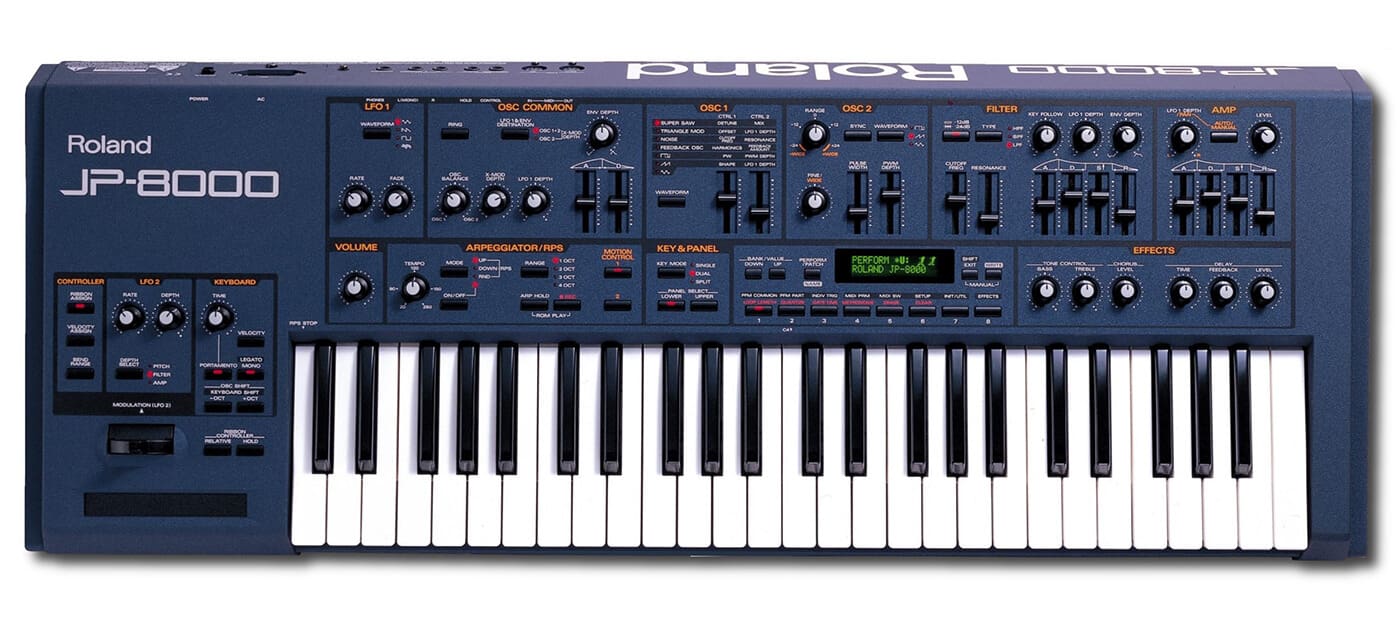Musical eras in history have often been defined by the production techniques or compositional approaches that cemented themselves as ‘the sound’ of the times due to their sheer ubiquity. The grunge bands of the late 90s went haywire on low-wattage amps and cheap Boss distortion pedals. Late 00s hip-hop was dominated by Antares’ Auto-Tune 5, a plugin so horrendously janky that it changed the musical landscape of vocal processing forever. There was a period of time in the 60s and 70s when Phil Spector’s over-compressed mixing style was on every big rock record from England and the United States.
Sometime around the turn of the century, however, between the inception of Friends and the apocalyptic inauguration of George Bush Jr., one particular sound dominated the dancefloor, providing the soundtrack to ecciez binges so great you’d probably cry if you remembered them. But unlike other era-defining sonic features, it wasn’t an arrangement style, a piece of gear or a combination of effects. It was something far simpler, and far more fundamental than any of the above. It was a waveform. A certain wiggly arrangement of air amongst all the possible wiggles.
The JP-8000 was first introduced by Japanese instrument manufacturer Roland in the late 1990s – a digital synthesiser meant to emulate the fat and exorbitantly expensive analogue keyboards from American titans Moog and Oberheim, but which failed miserably at achieving the same warm tones. Instead, the synth produced a wide array of raspy and buzzy farts that, conventionally speaking, were musically unusable. After fading largely into obscurity for several years, one particular setting caught the attention of electronic producers across Europe, exploding the instrument’s popularity almost overnight.
Take a sawtooth wave – piercing and sharp – and multiply it a few times, stacking the waves one on top of the other. Detune these copies slightly, and pan them across the stereo field. The resulting waveform is warm and rounded, fuzzy yet comforting, visceral but with a kind of 3D depth. It is somehow equally evocative of a reedy woodwind instrument as it is a swarm of bees. Its name screams gravitas and superiority, which is all but unjustified: the supersaw.
I would hesitate to describe anything on this planet as a religious experience, but the opening 30 seconds of Gigi D’Agostinos L’Amours Toujours, blasted through a speaker stack and listened whilst extremely un-sober, gets quite close. The highlight of the track by far is the supersaw riff: melody aside, the timbre of the motif feels like an embrace – it somehow blooms to fill the entire sonic space without ever feeling offensive or overdone.
When Italians in open balconies begun blasting this song during lockdown earlier in the year, it wasn’t the vocal line that was chanted and echoed across entire apartment blocks, but the anthemic supersaw lead.
The sheer number of global mega-hits that utilise the waveform as a central musical component is almost unimaginable when you realise how many genres and electronic styles are built solely on this one timbre. Everything from Darude’s iconic Sandstorm, to Madonna’s vocal house discography, to the most Ibiza-rinsed of Armin van Bauen tracks, to the greatest song of all time (Caramelladansen, of course) are filled to the brim with gooey supersaw goodness.
Outside of campy and nostalgic Eurobeat hits from the early 2000s, the waveform has found enduring relevance and popularity in the modern day, being a secret weapon of producers when they want to evoke intense and cathartic emotion.
Trap producers like Dylan Brady have employed washed out supersaw passages to punctuate blood curdling Bones verses and melodic choruses alike. PC Music, the record label that has now stamped its synthetic and bouncy sound signature on artists as big as Charli XCX and Carly Rae Jepsen, is more or less a supersaw worship cult wrapped up in a shiny aluminium bow. Even the material coming out of underground local rave outfits like Eternal and Ultravirus don’t shy away from the supersaw’s thick detuned chaos.
In my dreams, I hear glittery trance arps and punchy chord stabs echo between my ears. They speak without words and in an algorithmic tongue. When I’m down, supersaws pick me up. When I’m happy, supersaws launch me into the stratosphere.
I have often considered what it would be like to surgically replace my vocal cords with a Roland JP-8000, and communicate entirely in Lorenzo Senni songs. I think it would a fairly euphoric life.





